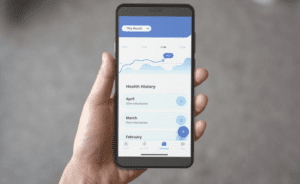Health
Your Guide to Mobile Infrastructure in Healthcare
The mobile health services market is exploding! It is now expected to grow to more than $158B by 2024 from just $21B in 2017. One key factor that will drive that growth is the innovation taking place with mobile technologies. Mobile technology trends indicate that hardware gets exponentially more powerful while the costs stay the same or even decrease—better known as Moore’s Law. This combination of increased processing power at a lower cost drives continued growth by opening up new opportunities, markets, and use cases for mobile health services every year!
Let’s take a look at some of the ways that mobile devices are helping drive innovation in the healthcare market. We’ve also provided a downloadable guide that explores what options are available for building and implementing dedicated mobile devices—see below for more details.
Mobile medical devices in action
Many healthcare professionals (HCPs) have started to adopt innovative mobile technologies into their business practices, especially as medical device manufacturers and software providers alike continuously expand on the current capabilities available with dedicated mobile devices. Some of the more significant mobile advancements in the medical field have aided in cancer care, diagnosing Parkinson’s disease, accessibility of portable ultrasound imaging systems, as well as ear and throat care in the place of the traditional otoscope and ophthalmoscope tools. The early adopters of these devices proudly boast benefits that include:
- The ability to build stronger communication channels with their patient base
- Higher efficiency and security with data flow between complex databases
- Better organized patient management processes
- Increased problem-solving capabilities
- Decreased prescription errors with more accuracy in diagnostics
- Seamless access to proprietary information
- Tracking and management capabilities for clinical trial studies
- Customizable patient profiles—to name a few!
Why mobile infrastructure is a must for success!
It’s obvious that HCPs experience countless benefits with the implementation of these innovative dedicated mobile devices. The key to successfully building and managing a dedicated mobile device lies in picking the right mobile infrastructure, which refers to anything that is involved with building, deploying and managing a fleet of dedicated mobile devices. This includes the hardware, operating system, management software, connectivity, shipping, and logistics—essentially everything except for the actual application that the device is running.
Until recently, delivering a dedicated mobile device to the healthcare space required software providers to either use consumer devices with third-party software or build a custom device from scratch.
However, there is a new wave of mobile infrastructure tailored to the enterprise use case that some of the most successful companies in clinical trials, remote monitoring, and patient engagement have started to adopt.
This new mobile infrastructure solves many problems around device lifecycle, security, logistics, and control over the operating system. Implementing a mobile infrastructure simplifies the process by reducing time, dollars and headaches typically associated with bringing a dedicated device to market.
Our downloadable white paper below dives deeper into what mobile infrastructure is and what the options are.
Exploring mobile infrastructure options for healthcare
No matter the use case, it is crucial to have a robust understanding of the mobile infrastructure solutions that will meet the needs of your business. In our white paper below you’ll walk away with a better understanding of the core components needed to deliver a secure, high-performing, and customizable dedicated mobile device and what infrastructure options are the best fit for your business needs.
Download Mason’s informational white paper HERE!

